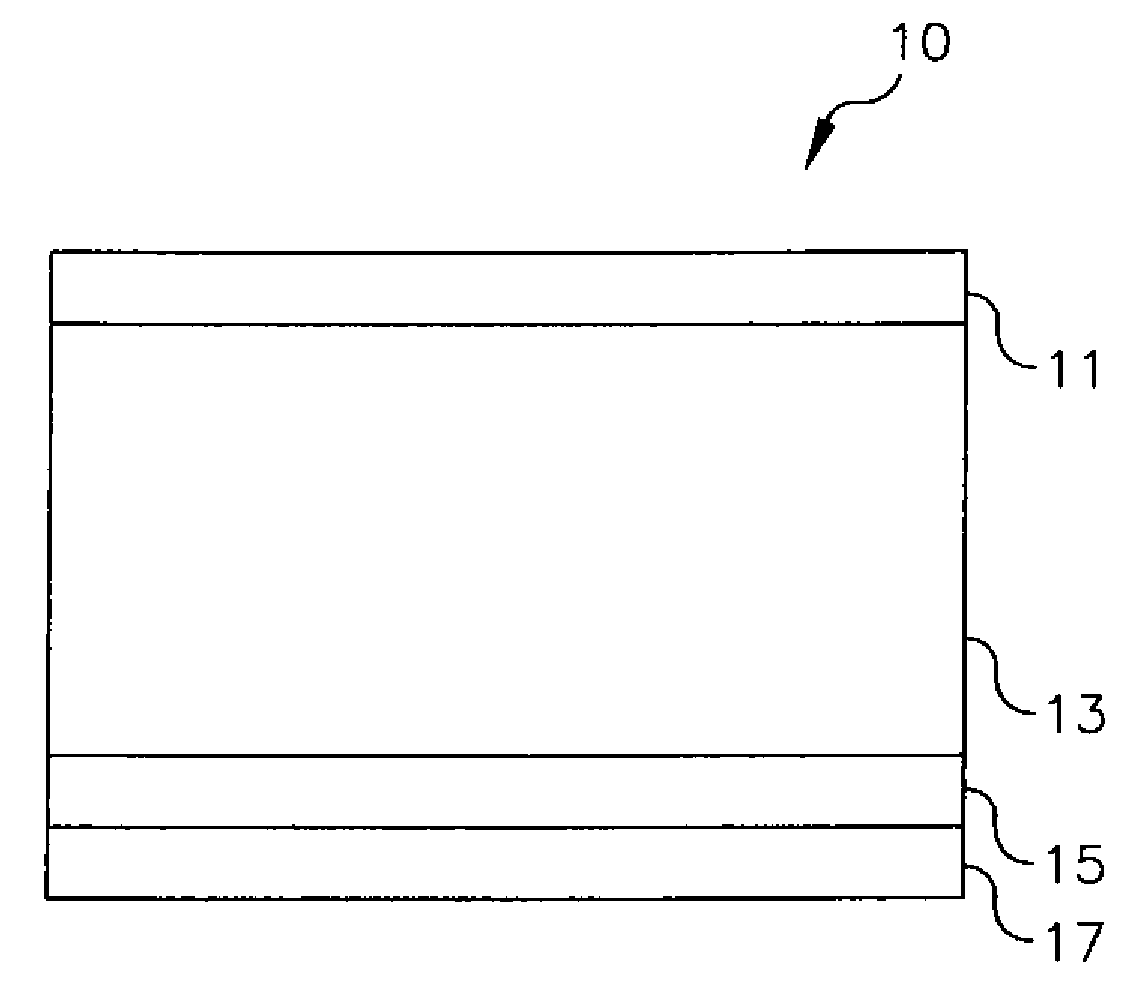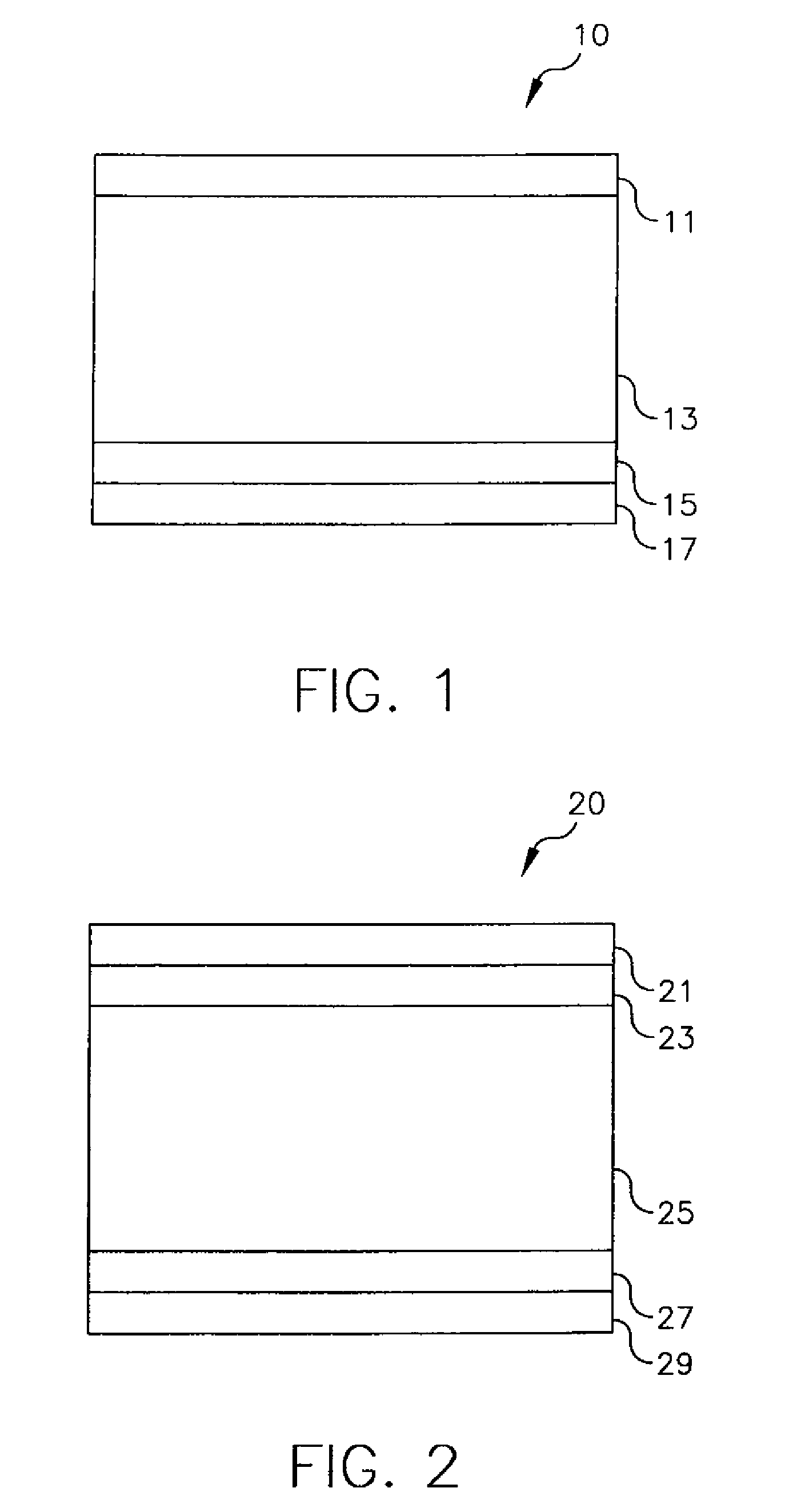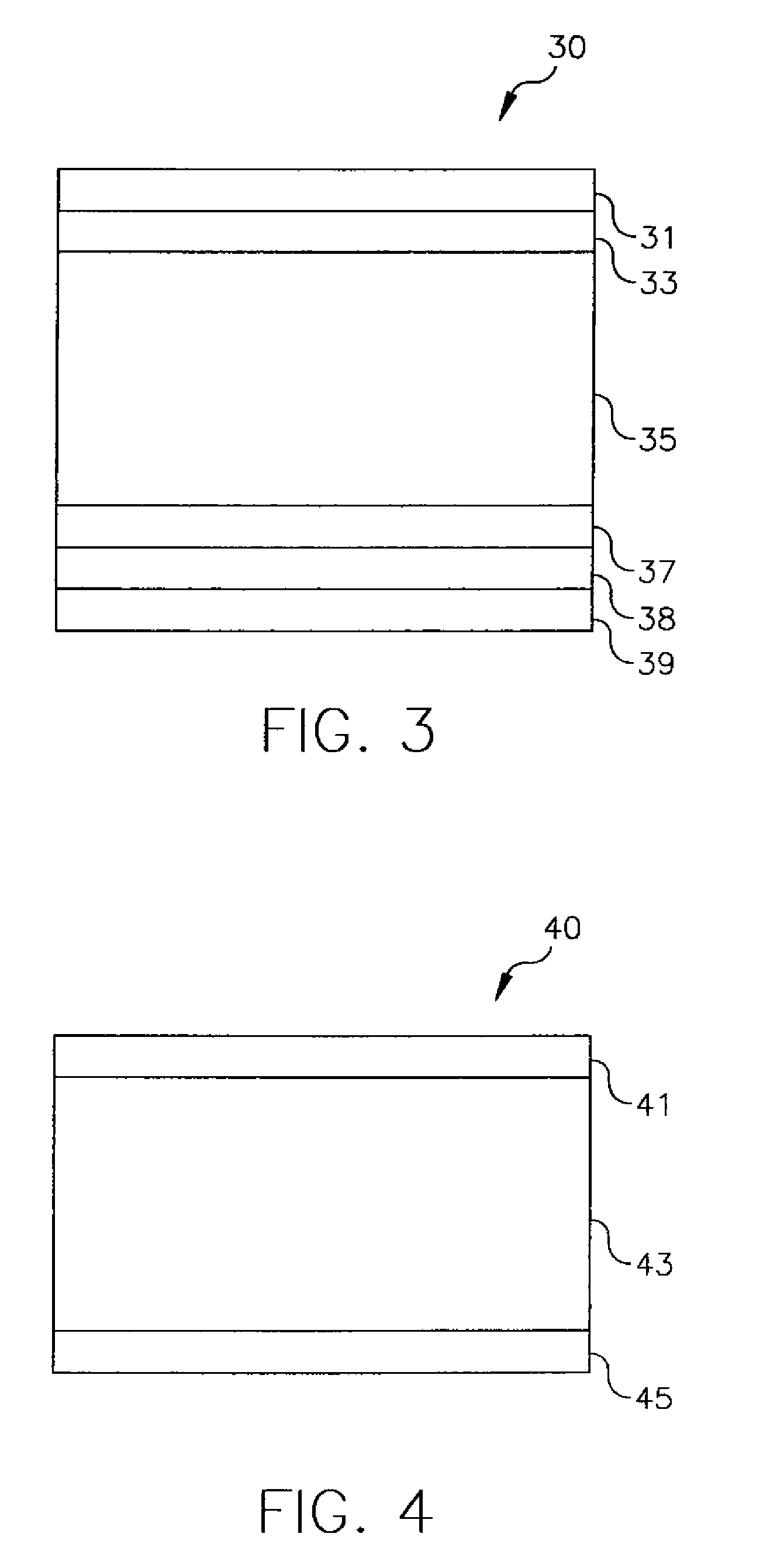Universal print media
a universal media and print technology, applied in the field of new print media, can solve the problems of no universal media that can give the same look and feel no matter, image physicals are harder to control, and high surface gloss is difficult to achieve, so as to improve the adhesion of printing ink and the ability to be glossed
- Summary
- Abstract
- Description
- Claims
- Application Information
AI Technical Summary
Benefits of technology
Problems solved by technology
Method used
Image
Examples
examples
[0116]The low density polyethylene (LDPE) resin used in the examples below was obtained from Voridian, an operating division of Eastman Chemical Company. The LDPE resins used were (SP2207 811A that has a melt index (measured by ASTM D1238) of 20, and D4042-P that has a melt index of 10 as Voridian 811, a 20 MFI resin. Ethylene methyl acrylate (EMA) used in the examples was also obtained from Voridian, and from Exxon Mobil. The EMA used were SP2207 (from Voridian), which had a melt index of 6 and a 20% methyl acrylate content; and Optema TC130 (from Exxon Mobil) which had a methyl acrylate content of 21.5% and a melt index of 20.
[0117]Talc (HTP1C) was purchased from Imi Fabi. Porous silica particles, Gasil 23D, Gasil 23F (6 micrometers) and Gasil HP39 (10 micrometers) were obtained from Ineos. A maleic anhydride polypropylene (maleated polyolefin), Orevac CA100, was obtained from Arkema group (previously known as Atofina chemicals)and ethylene methyl acrylate TC130 with a 21.5% methy...
examples 1 and 2
[0122]For Example 1, a 160 μm thick photographic paper was extrusion coated one both sides (one side of which served as the first exposed layer) with a polymer melt containing 20 weight % polylactic acid, 64.7 weight % LDPE, 7.5 weight % maleated polyolefin and 7.5 weight % talc. The total resin coating coverage on each side was maintained at 21.97 gM / m2. For Example 2, another sample was made in a similar manner except that the polymer melt contained 10 weight % poly(ethyloxazoline), Aquazol 50, 77.5 weight % LPDE (Voridian 811, a 20 MFI resin), 5% compatibilizer (Bynel 4288), and 7.5 weight % silica (Ineos Gasil 23D). The total resin coating coverage was maintained at 21.97 gm / m2. On the second resin coated side of both the Examples described above, an aqueous inorganic coating was coated comprising an aqueous dispersion of Aerosil 200, the latex L, Surfynol DF and matte particles such that the dry coverages were 80, 20, 0.11 and 20 mg / ft2 respectively to create the second exposed...
example 3
[0125]A polyethylene resin melt containing 11.4 wt % TiO2, 87.7 wt % LDPE, and 0.9 wt % of a mixture of colorants, optical brighteners and antioxidants, was extrusion coated on both sides of a 160 μm thick photographic paper support at 288-332° C. The resin coating coverage was 24.43 gm / m2. On one side of the resultant media, the second exposed side was created by a coating similar to that described in Example 1 except that the composition was as follows: Aerosil 200 45 mg, Ludox AM 45 mg, AQ 55D 10 mg and matte 20 mg / ft2. The media was printed on both sides in a NexPress 2100 and evaluated for pen writability.
[0126]The instrument used for pen writability evaluation consisted of an arm holding a ballpoint pen at a 55° angle to the surface of the paper. 250 grams of weight were applied to the arm while it touched the paper and the arm was drawn across the paper attempting to create a 1 inch line. The pen was then lifted and moved to another spot and the process repeated 10 times. The...
PUM
| Property | Measurement | Unit |
|---|---|---|
| contact angle | aaaaa | aaaaa |
| Tg | aaaaa | aaaaa |
| thickness | aaaaa | aaaaa |
Abstract
Description
Claims
Application Information
 Login to View More
Login to View More - R&D
- Intellectual Property
- Life Sciences
- Materials
- Tech Scout
- Unparalleled Data Quality
- Higher Quality Content
- 60% Fewer Hallucinations
Browse by: Latest US Patents, China's latest patents, Technical Efficacy Thesaurus, Application Domain, Technology Topic, Popular Technical Reports.
© 2025 PatSnap. All rights reserved.Legal|Privacy policy|Modern Slavery Act Transparency Statement|Sitemap|About US| Contact US: help@patsnap.com



